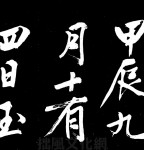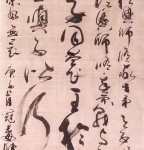Tibetan Mantras
The form of Tibetan letters is based on an Indic alphabet of the mid-7th century. The orthography has not altered since the most important orthographic standardization, which took place during the early 9th century. The spoken language continues to change. As a result, in all modern Tibetan dialects, there is a great divergence of reading from the spelling.
The Tibetan script has 30 consonants, otherwise known as radicals. Syllables are separated by a tseg ་, and because many Tibetan words are monosyllabic, this mark often functions almost as a space.
As in other parts of East Asia, nobles, high lamas and persons of high rank were expected to have strong abilities in calligraphy. But the Tibetan script was done using a reed pen instead of a brush. As for a mantra, it is a sound, syllable, word or group of words that is considered capable of “creating transformation.”
The use of mantras is widespread throughout spiritual movements that are based on or off-shoots of practices from earlier Eastern traditions and religions. The mantras used in Tibetan Buddhist practice are in Sanskrit, to preserve the original mantras. Visualizations and other practices are usually done in the Tibetan language.
| < Prev | Next > |
|---|
- 2009-03-25 - 得“自然”,备“古雅”--评米芾书法(转载)
- 2008-12-15 - 书法浅识(四) 转载
- 2008-12-14 - 书法浅识(三) 转载
- 2008-12-13 - 书法浅识(二) 转载
- 2008-12-13 - 书法浅识(一) 转载
- 2008-12-10 - 字里千秋,中国的书法艺术
- 2008-12-02 - 汉字书法的意境美
- 2008-11-08 - "丑"之为美:兼谈书法的审美标准(书法美学)
- 2008-09-28 - Ding Shimei "Yin Yang" (2008AD) Seal Script,
- 2008-09-16 - 转文恒山















